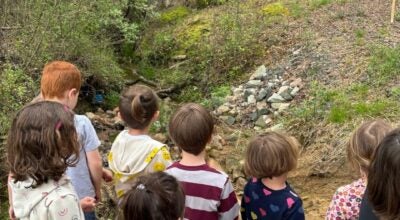Back to School 2019: Approved renewal plans
Published 12:00 am Tuesday, July 30, 2019
By Andie Foley
andie.foley@salisburypost.com
As school begins on Aug. 7, students in half of Rowan-Salisbury School’s 34-school district will experience the advantages of a now-yearlong endeavor: Renewal.
Renewal, a systemwide status granted through an application to the North Carolina General Assembly, was achieved last summer. The status, enabled through House Bill 986, has allowed for district-wide, charter-like flexibility in terms of funding, staff, curriculum and scheduling.
Accordingly, educators across the county have spent the ensuing months crafting plans to reshape the face of education here and, eventually, across the state. Leading the charge are instructors at each individual school site, forming teacher-led design teams to both evaluate and craft plans to meet the needs of each campus body through new initiatives. Their proposals have included scheduling changes such as shift scheduling or weekly late starts to play-based kindergarten classrooms, safe places, professional development and more.
To date, the Rowan-Salisbury Board of Education has approved the plans for 17 school sites, including nine elementary schools, three middle schools and five high schools.
Approved sites, along with their identified needs and strategies are as follows:
China Grove Elementary
Identified needs: Poverty, student performance and high social needs.
Strategies: Working to provide opportunities generally unavailable to students of poverty, China Grove Elementary is working to become an A+ School, a model that focuses on arts integration across all subject areas and classrooms, arts exposure and arts education. According to the school’s renewal plan, this shift will increase student attendance, foster grit and promote collaboration. The art focus will also increase student performance by exposing students to concepts of higher order and creative work and enabling experiential learning, the plan states. Teachers will use the arts focus for enriched assessment methods.
Granite Quarry Elementary
Identified needs: Lack of social-emotional learning, authentic curriculum integration and hands-on experiences and personalized learning experiences.
Strategies: To address social-emotional needs, Granite Quarry is implementing a school-wide social-emotional curriculum for daily use, implement de-escalation training for staff, and implement multi-tiered systems of support and positive behavior interventions and support. The school is also enriching hands-on experiences through professional development and supports, including go-and-see visits, personalized training and adequate personal and collaborative planning time. Finally, the school is implementing student learning clubs, hands-on learning expeditions and focusing on models of balanced literacy and guided math.
Hanford Dole Elementary
Identified needs: Low literacy levels, low parental engagement and a high number of discipline referrals.
Strategies: Hanford-Dole is addressing literacy needs through a new cross-subject program called iReady, Tier 2 interventions, tutors and a balanced literacy model. The school is also planning for monthly parent club meetings, increased Blackboard ConnectEd messages and family nights, as well as implementing support systems, positive behavior reinforcements and increasing professional development.
Hurley Elementary
Identified needs: Leadership to support teachers and the intervention process, incorporation of parent and community in green learning and outside learning experiences.
Strategies: Hurley is assisting its high number of beginning teachers by creating three teacher lead positions and adding a behavior technician position. The school is also planning community and parental learning events focused on green living, incorporating a parent resource center, adding a career exploration teacher, and allowing fifth-grade learners to explore careers catered to their specific interests outside of the school.
Isenberg Elementary
Identified needs: Social/emotional competencies for staff and students, lack of knowledge and hands-on experiences in science and math, and low parental engagement and community involvement.
Strategies: Isenberg educators will implement positive behavioral interventions and mentors for students and provide trauma and resiliency training for staff in order to address social and emotional needs. Its renewal plan accounts for increased professional development opportunities for staff, a focus on global competencies for students and staff, and increased parenting workshops and family nights. The school is also implementing a dual language immersion program with kindergarten learners this year.
Knollwood Elementary
Identified needs: Hands-on experiences for students, mastery and retention and data analysis.
Strategies: Knollwood provides routine hands-on learning expeditions outside of the school, supporting these learning experiences through coordinating conceptual units, complementary books and additional support instructors. The school is also focused on planning and implementing professional growth opportunities, providing teachers time to collaborate and using data to implement school-wide strategies to address deficits.
Landis Elementary
Identified needs: Mathematical conceptual understanding and academic skills and play in kindergarten.
Strategies: Landis is training four kindergarten- through second-grade teachers in math discourse through Project All Included In Math, increasing small group math instruction and extending interagency professional development through extensive work in professional learning communities. The school has also redesigned its kindergarten program from a primarily academic focus to one balanced between academics and play, using Title 1 funds to transform kindergarten classrooms and facilitate this shift.
Overton Elementary
Identified needs: Student transience, trauma-informed practices and STEM awareness.
Strategies: With over 30% of its students enrolling late or withdrawing early, Overton is focusing on small group academic interventions, re-teaching and on-boarding for transient learners. Additional support personnel is supporting these efforts. The school is increasing family outreach visits, providing teachers with de-escalation and redirection strategies and trauma-informed training, and instituting STEM/Design lab rotations facilitated through a STEM and Accelerated Studies position.
Shive Elementary
Identified needs: Limited life experiences, low math testing performance, low parental involvement and insufficient planning time for teachers.
Strategies: Facilitating student explorations of passions and careers, Shive is implementing student-selected clubs and opportunities to develop interpersonal and life skills. Additionally, the school is implementing new math programming, hosting quarterly parent events and showcasing activities through ConnectEd and social media, and providing teachers with additional planning time while students engage in life-enriching enhancements.
Corriher-Lipe Middle
Identified needs: Opportunities for students to explore careers and passions, student engagement and high-quality student-teacher relationships.
Strategies: Students at Corriher-Lipe will be given an additional two exploratory classes each year, with three new offerings including dance, emergency management and life skills. This is facilitated through a seven-block schedule. The school is planning for “Futuristic Fridays,” which focus on career and interest explorations, and creating smaller class sizes to enhance student-teacher interactions.
Knox Middle
Identified needs: Personalized learning and blended learning training, conflict resolution and trauma training, and parent resources.
Strategies: Teachers at Knox are being trained on personalized education through Education Elements, working together in content area “pods” to implement this educational model with fidelity. Additionally, the school has hired a life coach to help students identify their unique life goals and passions, and has constructed a parent resource room to help bridge the gap between home and school for families.
West Rowan Middle
Identified needs: English-language learners parent communication, student engagement and mentors for male students.
Strategies: To help parent communication, West Rowan has partnered with community translators and trained English language arts and social studies teachers to address the needs of these learners. Moreover, the school has adopted a focus on sustainable development to increase opportunities for problem- and project-based learning, and male students will be served with mentors from West Rowan High School as well as male middle school staff members.
East Rowan High
Identified needs: Achievement gaps, student attendance and graduation rates and interpersonal skills.
Strategies: Addressing achievement gaps for black students, students with disabilities and economically disadvantaged students, East Rowan is offering combined classes, certification programs and hybrid/online course, extended school hours with flexible scheduling and developing mastery-based pathways. The school is also emphasizing service learning and implementing an “EmpowER” advisory class focused on interpersonal skills.
North Rowan High
Identified needs: Personalization, authentic engagement, instructional design and community engagement.
Strategies: North Rowan has shifted focus to challenge-based learning facilitated through its design lab, a variety of course offerings and cross-curricular work applicable to the real world. Teachers and staff will be trained in challenge-based learning and authentic work creation through a full-time authentic work coach working in tandem with educators.
Salisbury High
Identified needs: Civic, digital and financial literacies, outreach and mental health.
Strategies: Salisbury High is offering performance- and project-based learning alongside core skill-developing “Hornet Hall.” Alongside parent education classes and a detailed marketing plan for outreach, the school will address the mental health of its student through stress-free zones, a trauma team, and training for staff. School will start late on Wednesdays to facilitate extended teacher professional development.
South Rowan High
Identified needs: Achievement gap, graduation rate plateau and student engagement.
Strategies: South Rowan is offering personalized academic pathways for learners created through collaboration with the student and an assigned adviser. This pathway will consist of integrated coursework connecting elective content with core content as well as work-based learning experiences for every student before graduation.
West Rowan High
Identified needs: English-language learner performance, student learning environment and student college/career counseling.
Strategies: West Rowan is providing additional training to staff to better serve the needs of its English-language learner program, developing an internship program for bilingual learners to assist in classrooms to facilitate this support. The school is also focusing on problem-based learning, professional development, and seeing that 50% of graduating seniors successfully complete internship opportunities.




